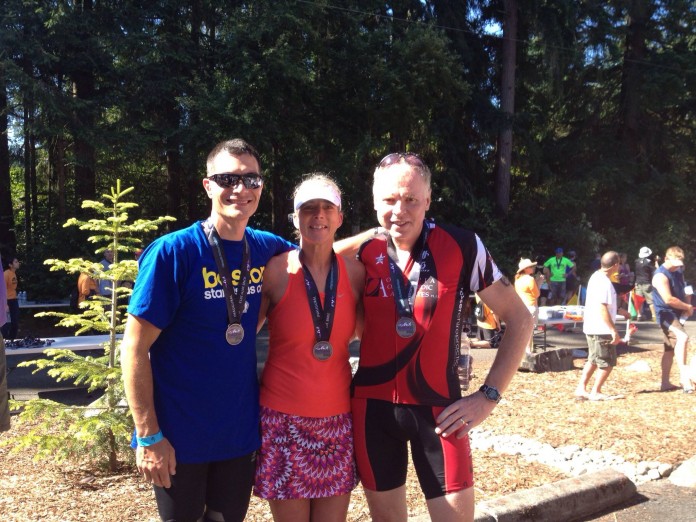How To Minimize The Risk Of Sport Injuries

Athletic Trainer and Physical Therapist Diana Roberts with two friends at a race.
Sport related injury defined
The concept of prevention of sports related injury is a little misleading and perhaps unreasonable.
Most athletes experience some form of injury during their career. The probability of minimizing the risk of injury in sport is a more accurate way of thinking about the injury management process.
Minimizing the risk of injury
There are measures that every athlete can take to minimize their risk of injury. Training consistently without the interruption of injury is a great goal to strive for in daily training. The longer you can go without an injury the more likely you are to run a personal best or maximize your performance.
Dr. Jack Daniels in his great running book, the Daniels’ Running Formula, makes the point that we don’t always send our best runners to the Olympic Games. The runners who make it to the starting line of major events like the Olympic Games are sometimes those who had the least amount of significant injuries.
This principle of minimizing injury applies to every athletic ability level. To get to the starting line, let alone run a personal best, requires paying close attention to how your body is feeling.
Listen to your body
Being aware about how your body is feeling during and after exercise is the first factor in minimizing the risk of injury. For example, a couple of good questions to ask yourself during exercise may include: Am I experiencing some low-grade ache, in your Achilles or IT band (iliotibial band)? Is this problem persisting over several runs? If so, then the next step is to begin early treatment to address these symptoms.
Drilling down a bit more, pain in the Achilles and IT band begins as a result of the soft tissue, fascia and muscle becoming tight, inflamed, with the development of tissue restriction. As the muscle gets tighter, it begins to pull at its tendinous insertions. It is always good to understand the basics of how injuries occur when trying to minimize the risk of injuries.
Early treatment is best
Initial self-treatment, for early treatment, could include using the Stick (similar to a rolling pin, but flexible), roller, gentle stretch of the muscle (stretches should never be felt at the tendon or ligament, which are located near the joint - where the body bends, but in the muscle belly), and icing (no less than 10 minutes and no more than 20 minutes).
A thin barrier, such as a pillow case is recommended, when using chemical ice bags because they may have a lower freezing temperature than ice.
Recognition is the first step in addressing and beginning early treatment of injury symptoms. The speed with which treatment is started, is directly related to the speed, with which the symptoms are resolved.
Determine the root causes
Assessment to identify any causative biomechanics, flaws in training, or the condition of your running shoes, should be considered to prevent the symptoms from progressing to an overuse injury.
These are all things that a runner may be able to self-assess. However, it might be beneficial to consult with a certified athletic trainer as well. A qualified professional can help assess and identify possible musculoskeletal imbalances in strength, flexibility and biomechanics. In addition, a certified running or triathlon coach can possibly identify potential flaws in your training as well.
Summing it all up
In conclusion, many athletes train near the edge of their ability level when training to maximize performance. There is a fine line between working just hard enough to reach your goal and crossing the line of stressing your body too much. The key ways to minimize the risk of athletic injury are AWARENESS and early TREATMENT.
Train safely, and grow in wisdom.
Coach Roberts
P.T., A.T.C.
About the Author: Diana Roberts graduated from the University of Health Sciences Chicago Medical
School and has been in the athletic training profession for 30 years. She
provides the following services: athletic training, bike fitting, running and biomechanical assessment. She is
also a certified athletic trainer, Bike Fitter, and USAT triathlon coach and offers services in each of these areas.
Diana has participated in endurance sports, for the past 30 years, including the Boston, Chicago and New York marathons, 13 Ironman triathlons and many cycling events.
Coach Roberts has worked with novice and Olympic athletes as well as everyone else in between.
Coach Weber, A.T.C.
Disclaimer: This article is for general education purposes only. Always contact a qualified medical professional when it comes to any potential injury.